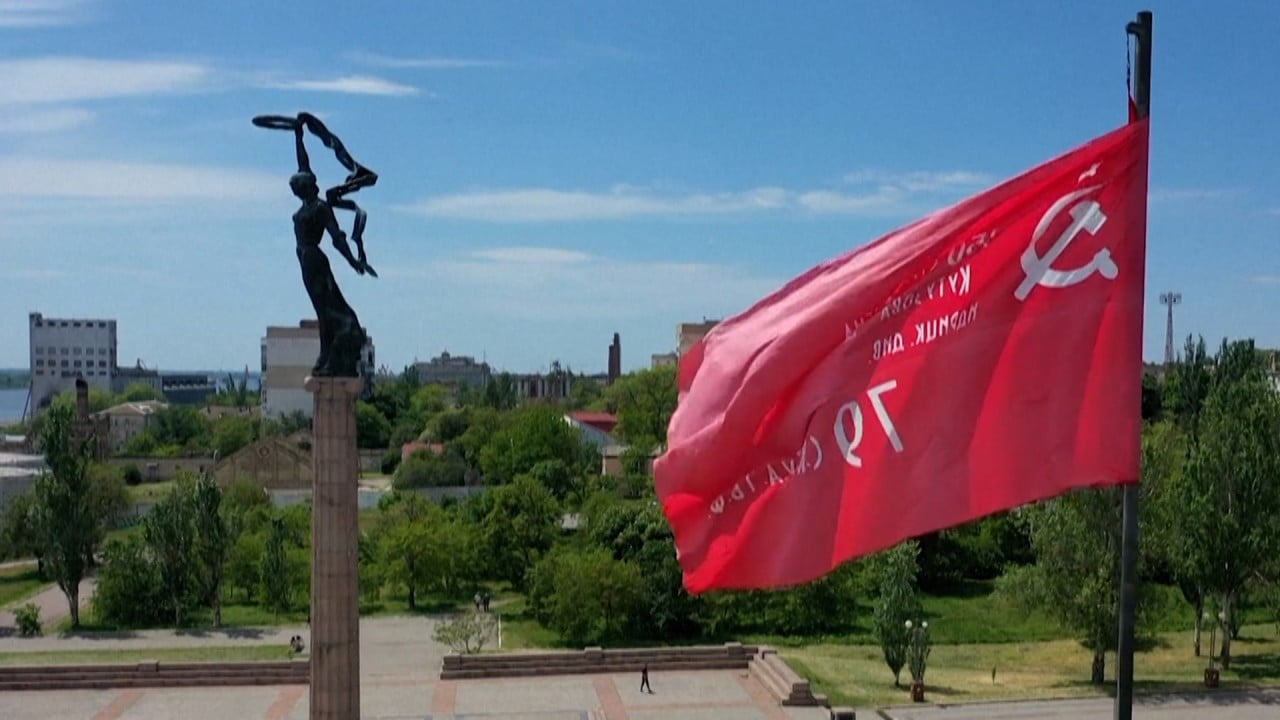
Ukraine counterattacks and warns Russians in occupied Kherson: ‘surrender or be destroyed’
- UK report says Kherson city virtually cut off from other Russia-held territories after bridge strikes
- It was a morale-boost for the Ukrainians as Russian forces occupy around a fifth of the country
A Ukrainian counteroffensive has virtually cut off the Russian-occupied southern city of Kherson and left thousands of Russian troops stationed near the Dnipro River “highly vulnerable”, according to British defence and intelligence officials.
Ukraine has made clear it intends to recapture Kherson, which fell to Russia in the early days of the invasion launched by Russian President Vladimir Putin on February 24.
On Thursday, Ukraine presidential adviser Oleksiy Arestovich said the operation to liberate Kherson “has already begun”. Kyiv’s forces, he said, were planning to isolate Russian troops there and leave them with three options – to “retreat, if possible, surrender or be destroyed”.
The British military estimated that Ukraine’s counteroffensive in Kherson is “gathering momentum”.
“Their forces have highly likely established a bridgehead south of the Ingulets River, which forms the northern boundary of Russian-occupied Kherson,” the British Defence Ministry said on Thursday.
It added that Ukraine has used its new long-range artillery to damage at least three of the bridges across the Dnieper River.
Sea mine risk slows rush to extract grain from Ukraine
“Russia’s 49th Army, stationed on the west bank of the Dnipro River, now looks highly vulnerable,” it said in a regular intelligence bulletin on Twitter, adding that Kherson was virtually cut off from the other territories occupied by Russia.
“Its loss would severely undermine Russia’s attempts to paint the occupation as a success.”
The 1,000-metre-long Antonivskyi bridge over the Dnieper River was attacked on Wednesday. After previous Ukrainian attacks damaged the bridge last week, it was closed to trucks, but it had remained open for passenger vehicles until the latest strike.
The bridge is the main crossing over the Dnieper in the Kherson region. Knocking the crossings out would make it hard for the Russian military to keep supplying its forces in the region.
The only other option is a dam at a hydroelectric plant in Kakhovka, which also came under Ukrainian fire last week but has remained open.
“We are doing everything to ensure that the occupying forces do not have any logistical opportunities in our country,” President Volodymyr Zelensky said in a Wednesday evening address.

Kirill Stremousov, the deputy head of the Russian-installed regional administration in Kherson, sought to play down the damage to the bridge, insisting that the attack would not affect the outcome of the hostilities “in any way”.
Russian officials had earlier said they would turn instead to pontoon bridges and ferries to get forces across the Dnieper River.
Still, the attack was a morale-boost for the Ukrainians as the war enters its sixth month. Russian forces are grinding through the Donbas region of eastern Ukraine and occupy around a fifth of the country.
As well as the eastern Donbas region, Russia has set its sights on large swathes of southern Ukraine, where it has occupied two regions north of the Black Sea peninsula Crimea, which it annexed from Ukraine in 2014.
Ukraine’s Zelensky replaces commander as Russian forces dig in
But Ukrainian forces in recent weeks have been clawing back territory in the Kherson region. Their counteroffensive, supported by Western-supplied long-range artillery, has seen its forces push closer to Kherson city, which had a pre-war population of under 300,000 people.
Oleksiy Danilov, secretary of Ukraine’s National Security and Defence Council, earlier tweeted that Russia was concentrating “the maximum number of troops” in the direction of the Kherson but gave no details.
Arestovich the presidential adviser said Russia was conducting a “massive redeployment” of forces from the east to the south in what amounted to a strategic shift from attack to defence.
The power station is near the city of Svitlodarsk in eastern Ukraine’s fiercely-contested Donetsk region.
Russia invaded Ukraine to demilitarise and “denazify” its neighbour. Thousands of civilians have died and millions have fled. Russian artillery barrages and air strikes have pulverised cities.
On Wednesday, a US lawmaker claimed that more than 75,000 Russians had been killed or wounded during the war in Ukraine.
Democrat Elissa Slotkin talked to CNN after a classified briefing with officials from US President Joe Biden’s administration.
In the lead-up to its invasion, Russia reportedly amassed 150,000 soldiers along the Ukrainian border.
“We were briefed that over 75,000 Russians have either been killed or wounded, which is huge, you’ve got incredible amounts of investment in their land forces, over 80 per cent of their land forces are bogged down, and they’re tired,” Slotkin said.
The most recent estimate from the US Central Intelligence Agency (CIA) was that 15,000 Russian forces had been killing in fighting.
The Russian military last reported its losses in March, when it said that 1,351 troops were killed in action and 3,825 were wounded.
Ukraine’s battlefield casualties have fallen to about 30 per day, from a high of 100-200 per day in May-June, Zelensky said last week.
Reuters, Associated Press, dpa and Agence France-Presse

